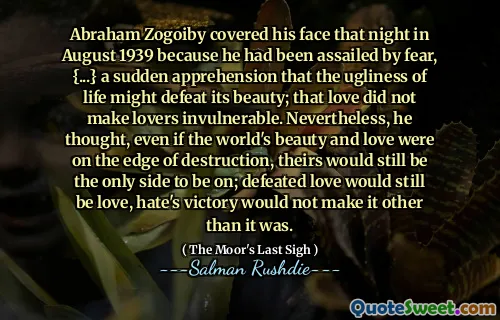There is a thing that lives in us, eating our food, breathing our air, looking out through our eyes, and when it comes out to play nobody is immune; possessed, we turn murderously upon one another, thing-darkness in our eyes and real weapons in our hands, neighbour against thing-ridden neighbour, thing-driven cousin against cousin, brother-thing against brother-thing, thing-child against thing-child.
In Salman Rushdie's "The Moor's Last Sigh," the author explores the darker aspects of human nature that reside within us. He describes a pervasive force that consumes our very essence, corrupting our perspectives and leading us to act against one another. This force transforms our relationships into battlegrounds, where neighbors, family members, and friends turn against each other, driven by an internal darkness that eludes control. The imagery evokes a sense of paranoia and hostility that reflects the inherent violence within humanity.
As this "thing" emerges, it strips away our humanity, resulting in fragmented connections and violent confrontations. Rushdie illustrates how this hidden influence can lead to brother against brother, and child against child, demonstrating the destructive potential of our inner turmoil. This dissection of the human condition highlights the fragility of our bonds and the easy descent into chaos when primal instincts are unleashed, underscoring a universal theme of inner conflict and the consequences of alienation.






